Search results for: Mckinsey 7s
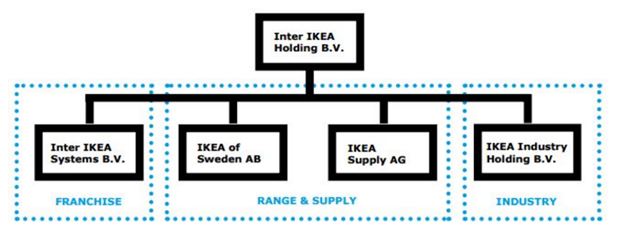
IKEA has a unique organizational structure. Specifically, “around the globe, a large number of companies operate under the IKEA trademarks. All IKEA franchisees are independent of Inter IKEA Group. A large group of franchisees are owned and operated by INGKA Group. Inter IKEA Group and INGKA Group have the same founder, and a common history and heritage, but have operated under different owners and management since the 1980s”[1] Figure 1 below illustrates the essence of IKEA organizational structure: Figure 1 IKEA organizational structure Inter IKEA Group integrates of a group of companies. The group sets strategic direction for the whole business and connects all IKEA franchisee. The group is formed of three core businesses as illustrated in Figure 1 above: 1. Inter IKEA Systems B.V. is the furniture retailer’s franchisor worldwide. This unit also deals with franchise agreements with 11 franchisees that operate in more than 500 locations.[2] 2. IKEA Range & Supply develops and supplies products for the home improvement and furnishing chain. 3. IKEA Industry produces home furnishing products and it manufactures about 10-12% of the total range. The present organizational structure of IKEA illustrated in Figure 1 above is the outcome of a major restructuring initiative that was introduced in 2016. To improve the franchise system and clarify roles, IKEA range, supply and production activities were transferred to the new Inter IKEA Group headed by Inter IKEA Holding B.V. Currently, Jon Abrahamsson Ring is the CEO of Inter IKEA Holding B.V. The Figure 2 below illustrates the overview of the franchise system. Figure 2 Overview of the IKEA franchise system[3] Specifically, IKEA Group sold key subsidiaries for EUR 5.2 billion to increase the flexibility of the business to be able to adapt to changes in the external global marketplace. IKEA management considers this change to be much…
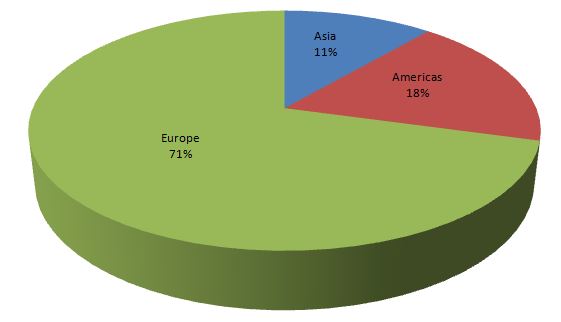
SWOT is an acronym for strengths, weaknesses, opportunities and threats related to organizations. SWOT analysis is a strategic tool that helps businesses to analyse internal and external factors affecting the bottom line. Strengths and weaknesses are internal factors that can be influenced by the company. Opportunities and threats, on the other hand, are external factors that have to be taken into account in strategic decision-making by the senior management. The following table illustrates IKEA SWOT analysis: Strengths 1. Market leadership in the global scale 2. Democratic design concept 3. Competency in cost-cutting through product and process innovation 4. Brand value and solid financial position 5. Vast, yet focused product range Weaknesses 1. Weak presence in Asia 2. Damaged reputation due to a series of incidents 3. Competitive advantage difficult to sustain 4. Lack of differentiation of IKEA products and services 5. Lack of flexibility due to large size Opportunities 1. Increasing emphasis on CSR 2. Increasing presence in developing countries 3. Adding premium range of products into portfolio 4. Strengthening cost leadership competitive advantage through technological innovation 5. Benefiting from increasing digitalization of various business processes Threats 1. Decline in demand due to increase in consumer income 2. Unsustainability of ‘democratic design’ concept 3. Emergence of competition from Asia 4. Increasing costs of raw materials 5. Global economic and financial crisis SWOT Analysis summary for IKEA Strengths in IKEA SWOT Analysis 1. IKEA is an undisputed market leader in the global market of home improvement and furnishing. The Swedish furniture chain has 11 franchisees operating in more than 500 locations in 63 countries.[1] Additionally, the furniture retailer has 22 Pick-up and Order…

The current IKEA leadership practices and patterns are based on leadership principles and life philosophy of its founder Ingvar Kamprad. Known to practice transformational and charismatic leadership styles, Ingvar Kamprad had been a driving force for many decades behind the phenomenal success of the home improvement and furnishing chain. Ingvar Kamprad founded the furniture retailer in 1943 and after leading the business for 70 years, he handed over control to his three sons. Nevertheless, work principles of the founder associated with frugality and effectiveness continues to serve as a basis for IKEA leadership practices in modern days. In 2017 Jesper Brodin became President and CEO of IKEA Group, INGKA Holding B.V. and its controlled entities. He is only the 6th CEO in The Swedish furniture chain’s history of more than 75 years. Mr. Brodin has worked as an assistant to founder Ingvar Kamprad and it is widely believed that IKEA CEO will not change the strategic direction set by the founder of the business. The CEO of Inter Ikea that manages company’s brand and concept Mr. Jon Abrahamsson Ring has also served as founder’s assistant for many years. It has been noted that “former assistants of Mr. Kamprad have had a near monopoly on the leadership of the two main companies in the furniture empire in recent times”[1]. Apart from two executives mentioned above, former Ingka CEOs Peter Agnefjall and Anders Dahlvig were also former assistant to Mr. Kamprad. IKEA leadership principles are based on the following pillars: 1. Leading by example. It is difficult to contain IKEA leadership style into a single classification due to a unique nature of the business in more than one ways. Perhaps, leading by example, may the most closely characterise leadership practices at IKEA. The famous quote by IKEA founder Ingvar Kamprad…
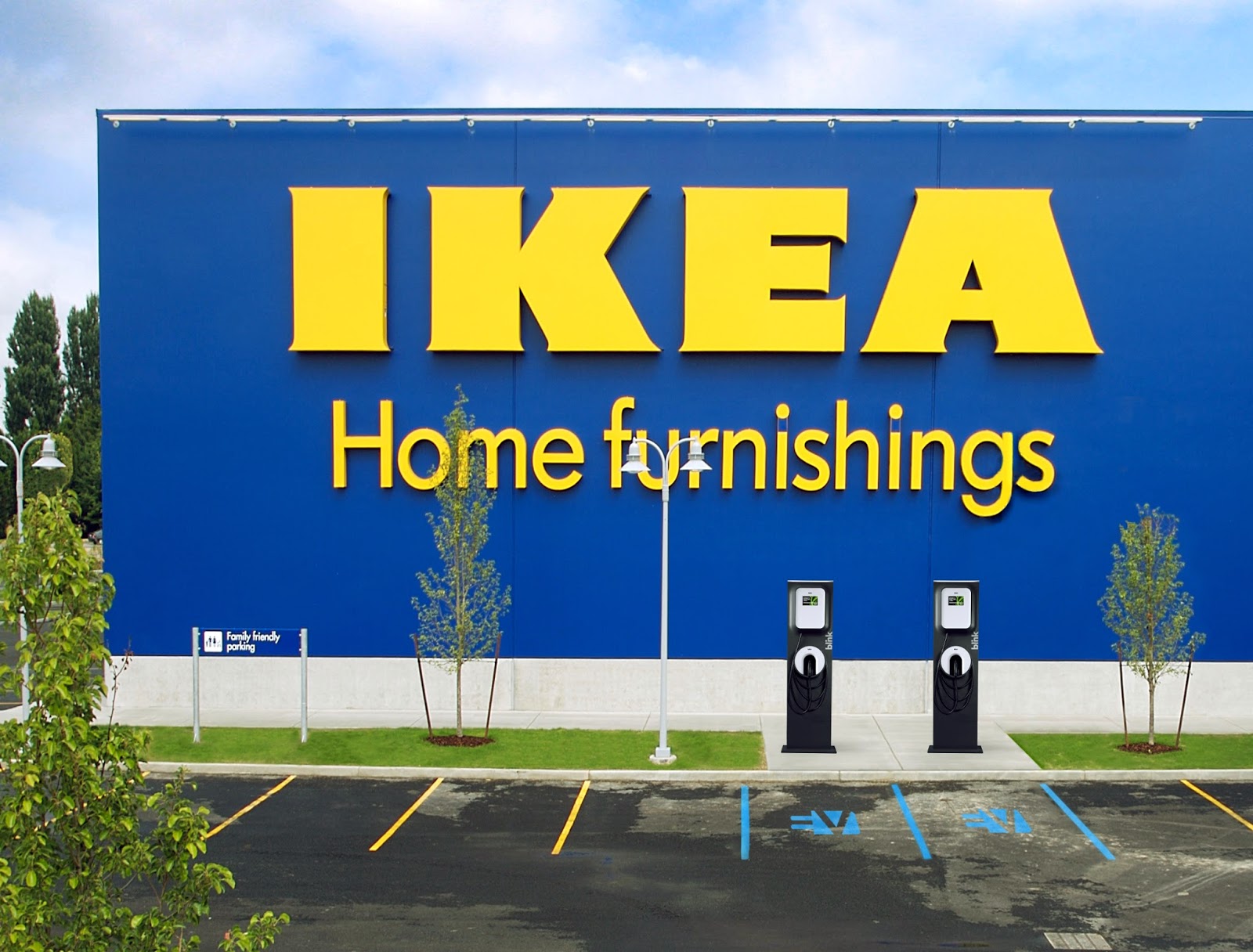
IKEA business strategy is built upon the IKEA concept. The IKEA Concept starts with the idea of providing a range of home furnishing products that are affordable to the many people, not just the few. It is achieved by combining function, quality, design and value – always with sustainability in mind. The IKEA Concept exists in every part of the company, from design, sourcing, packing and distributing through to business model.[1] The following points constitute integral elements of IKEA business strategy. 1. Offering the lowest prices. Cost effectiveness is one of the solid bases of IKEA competitive advantage. The global furniture retailer is able to offer low prices thanks to a combination of economies of scale and technological integration into various business processes. 2. Increasing variety of products. Great range of products also belongs to the list of IKEA competitive advantages. There are 12000 products across in IKEA portfolio and the company renews its product range launching approximately 2000 new products every year.[2] The company is also increasing its presence in food and catering industries. 3. International market expansion strategy. The home improvement and furnishing chain has traditionally engaged in new market development in an aggressive manner. IKEA has11 franchisees operating in more than 500 locations in 63 countries.[3] Furthermore, The Swedish furniture chain has long-term plans to establish its firm presence in many developing countries. 4. Benefiting from strategic alliances. The global furniture retailer benefits from strategic alliances to a maximum extent. The formation of strategic alliances is placed at the core of IKEA business strategy. The list of the most successful collaborations include partnership with Apple to explore the possibilities of Augmented Realityas a tool for home-furnishing, partnership with LEGO for new product development and partnership with Adidas in knowledge sharing about customer behaviour. Experience and competency…
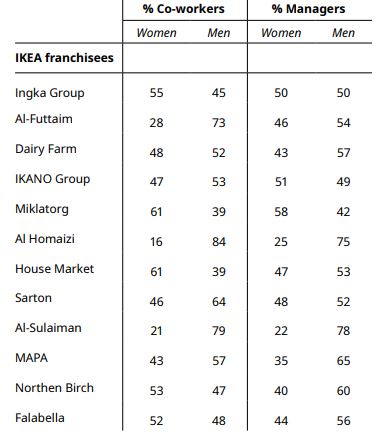
IKEA organizational culture plays an important role in maintaining cost-effective business operations to sustain cost leadership business strategy for the furniture giant. In other words, due to its cost leadership business strategy, IKEA does not offer the most competitive financial compensation to its workforce. Instead, the home improvement and furnishing chain attracts employees with intangible benefits that are deeply integrated within IKEA corporate culture. IKEA organizational culture is based on the following principles: 1. Simplicity and high level of informality. It has been noted that “humbleness in approaching tasks and simplicity in the way of doing things are cornerstones of the IKEA culture”.[1] For example, in IKEA US only a few executives have business cards and “everyone is on a first-name basis and sits side by side at IKEA desks and if you have an ego that needs stroking, IKEA is not the workplace for you.”[2] 2. The value for teamwork. Executives who prefer to manage as one-man show do not fit into IKEA organizational culture. The Swedish furniture chain wants to ensure that it employs only individuals who share its values and appreciate its culture. For this reason, individuals wishing to join IKEA are offered to take an online test which poses a series of 10 work-based scenarios with a choice of actions. The outcome of the test advises applicants if they are likely to ‘fit’ into IKEA organizational culture. 3. Embracing diversity among employees and different ways of doing things. Diversity among the workforce in terms of gender, race, age, ethnicity and sexual orientation is an important element of IKEA corporate culture. As illustrated in table below, there is an adequate level of women representation among across franchisees in floor level workers, as well as, management. IKEA employee gender diversity in FY21[3] Furthermore, the furniture retailer supports…
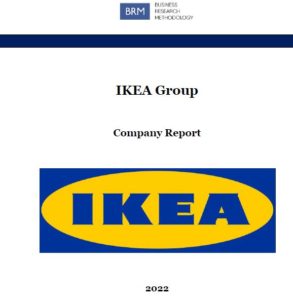
IKEA Group owned by Stichting INGKA Foundation is the largest furniture and home appliances manufacturer and retailer in the world. Founded almost eight decades ago in Småland, southern Sweden by Ingvar Kamprad, today IKEA Group has 11 franchisees operating in more than 500 locations in 63 countries (Annual Report, FY21). By the end of FY21 IKEA employed 225000 people worldwide, an increase of 8000 people compared to the previous year. The world’s largest furniture retailer offers nearly 12000 products and develops approximately 2000 new products each year. In FY21 the company generated total operated income of EUR 25.6 billion, an increase of 8.5% compared to the previous year. Net profit for the year amounted to EUR 1.4 billion (Annual Report, FY21). IKEA’s vision is “to create a better everyday life for the many people” and the company follows an extreme cost leadership business strategy along with new product development strategy to realize this vision. International market expansion strategy also represents an important element of IKEA business strategy. Leadership style exercised to manage the home improvement and furnishing chain can be branded as leading by example, as set by the late founder of the business Ingvar Kamprad. Furthermore, the company has integrated the principles of frugality and intangible employee motivation into its leadership practices. The Swedish furniture chain has devised a unique and complicated organizational structure designed to pay minimum taxes. IKEA possesses a number of noteworthy strengths such as market leadership, ownership and efficient application of democratic design concept and solid financial position of the business. At the same time, the global furniture retailer has serious weaknesses as well. These include weak presence in Asia, difficulty to sustain the competitive advantage and the lack of flexibility of the business due to its large size. IKEA Group Report contains the application…
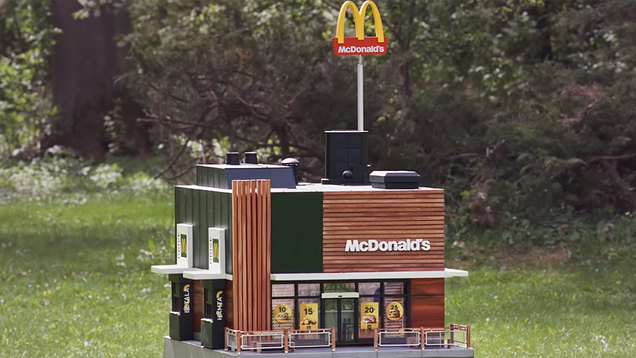
McDonald’s ecosystem, also referred to as McEcosystem comprises 40,031 restaurants in in 119 countries.[1] As of December 2021 in total 37,295 stores, or 93%, were franchised. The company provides a global brand, operating system, and financial tools to help these franchisees become successful. It has been noted that “franchisees are to McDonald’s as developers are to Facebook or Salesforce”[2]. In other words, franchisees help the fast food chain to develop new products thanks to their experience of dealing with customers on a daily basis on their respective local markets. For example, the most popular items in McDonald’s menu such as Big Mac, Filet-O-Fish, or McMuffin were invented by franchisees. It can be argued that there is a great potential for McDonald’s to further develop an effective ecosystem with positive implications on the bottom line. In order for Macdonald’s ecosystem to be efficient the following points need to be taken into account: 1. Facilitating collaboration. Back in time it cost franchisee-inventors of Big Mac, Filet-O-Fish and McMuffin considerable efforts to convince then CEO Ray Kroc to add their inventions on McDonald’s menu. Once added new meals proved to be hugely successful and they are among best selling items to this day. The fast food chain has expanded multiple times since that time. Accordingly, the potential for additions on the menu invented by franchisees has expanded as well. It is critically important to establish and maintain collaboration with all stakeholders in general and franchisees in particular in order to realize this potential in practice. 2. Promoting knowledge sharing. In order to achieve franchisee contribution to strengthen its ecosystem, McDonald’s needs to ensure knowledge sharing among franchisees efficiently. Such initiatives may include organizing online and offline forums aimed at new product development and rewarding franchisees who contribute to knowledge sharing the most. 3. Effectively using the…
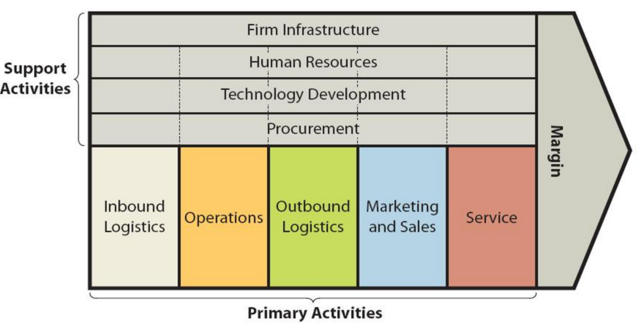
Value chain analysis is an analytical framework that assists in identifying business activities that can create value and competitive advantage to the business. The figure below illustrates the essence of McDonald’s value chain analysis. McDonald’s value chain analysis McDonald’s Primary Activities McDonald’s Inbound logistics McDonald’s inbound logistics involves receiving and storing raw materials and using them to produce its burgers and other items in the menu. Raw materials for the fast food chain include meat, raw vegetables, ketchup, mayonnaise, napkins etc. Economies of scale are the main source of value creation in McDonald’s inbound logistics. The fast food giant has been pursuing backwards vertical integration strategy. This strategy involves companies to expand their roles and capabilities to complete tasks formally fulfilled by other companies in their supply chain. Specifically, McDonald’s “grow their own beef through contracted producers, process their own meat, create their own spices and mixes in factories that they contract, grow their own potatoes and other vegetable through contracted producers, transport their goods on their own.”[1] Backward vertical integration strategy allows the fast food chain to control the quality of their ingredients and reduce the costs of supply. McDonald’s Operations McDonald’s operates more than 40,000 company-owned and franchised restaurants. As of December 2021 in total 37,295 stores, or 93%, were franchised[2]. McDonald’s franchise restaurants have one of the following formats: conventional franchise, developmental license or affiliate.[3] Conventional franchising involves franchisees paying rent and royalties on the percentage of sales along with the payment of initial fees when opening a new restaurant. In this type of franchising, McDonald’s Corporation owns the land and building or secures a long-term lease for the restaurant location and the franchisee pays for equipment, signs, seating and décor.[4] Developmental license involves licensees providing capital for the entire business, including the real estate interest.[5] In developmental license…
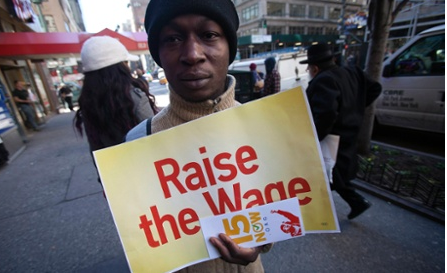
McDonald’s CSR is an interesting topic due to the size and scope of the operations of the company. The fast food giant had formulated its 2020 Aspirational Goals that explain the measures of sustainable sourcing of foods and packaging, providing balanced choices to customers, developing and operating environmentally efficient McDonald’s restaurants and supporting local communities to be initiated by the company. By the end of 2020 the fast food giant achieved or substantially achieved the majority of its aspirational goals. The company releases The Good Business Report annually and it includes the details of McDonalds CSR programs and initiatives engaged by the company. McDonald’s Supporting Local Communities McDonald’s claims to be improving the lives of children and their families via the support of Ronald McDonald House Charities (RMHC) and other organizations. According to McDonald’s this support addresses the needs such as education and physical activity The company is also proud to support the network of over 260 local chapters of RMHC spanning over 60 countries and regions that creates, finds and supports programs that directly improve the health and well-being of children and their families. In 2020, the fast food chain announced a five-year, USD10390 million commitment to RMHC. McDonald’s Educating and Empowering Workers McDonald’s Hamburger University, founded in 1961, comprises 8 campuses around the world and provides training for McDonald’s Franchisees, managers and employees In Europe, McDonald’s and participating Franchisees have pledged to offer 45,000 apprenticeships by 2025[1] Labour and Human Rights at McDonald’s The company requires its suppliers to adhere to the Supplier Code of Conduct. The Code clarifies requirements of McDonald’s about issues related to Human Rights, Environmental Management, Workplace Environment and Business Integrity In 2018, the fast food chain introduced McDonald’s Human Rights Policy, which outlines its commitment to respect its people and their…
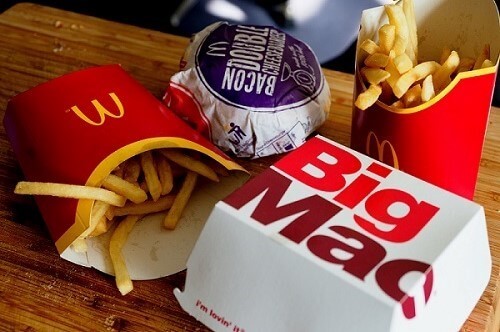
McDonald’s 7Ps of marketing comprises elements of the marketing mix that consists of product, place, price, promotion, process, people and physical evidence. Product Element in McDonald’s Marketing Mix (McDonald’s 7Ps of Marketing) McDonald’s restaurants offer a substantially uniform menu, although there are geographic variations to suit local consumer preferences and tastes. The fast food chain sells a wide range of fast food products such as hamburgers and cheeseburgers, Big Mac, Quarter Pounder with Cheese, Filet-O-Fish, several chicken sandwiches, Chicken McNuggets, wraps and french fries. The company also offers salads, oatmeal, shakes, McFlurry desserts, sundaes, soft serve cones, pies, soft drinks, coffee, McCafé beverages and other beverages.[1]Although, the company has long announced its pledge to increase the nutritional value of its meals, McDonald’s foods widely remain to be perceived as unhealthy. Place Element in McDonald’s Marketing Mix (McDonald’s 7Ps of Marketing) There are 40,031 McDonald’s restaurants in 119 countries.[2] As of December 2021 in total 37,295 stores, or 93%, were franchised. According to its aggressive expansion business strategy, the company aims to establish its presence in urban, as well as, in rural areas. The company states that “McDonald’s looks for the best locations within the marketplace to provide our customers with convenience. We build quality restaurants in neighbourhoods as well as airports, malls, tollways, and colleges at a value to our customers”.[3]. Generally, major fast food restaurants tend to cluster and in most locations, where there is a McDonald’s, there is also a Burger King right across the street.[4] Price Element in McDonald’s Marketing Mix (McDonald’s 7Ps of Marketing) McDonald’s pricing strategy comprises the following: 1. Economy pricing. McDonald’s follows cost leadership business strategy and accordingly, its foods and drinks are offered for competitive prices. The fast food chain offers customers the possibility to dine for a fraction of costs that are charged…
